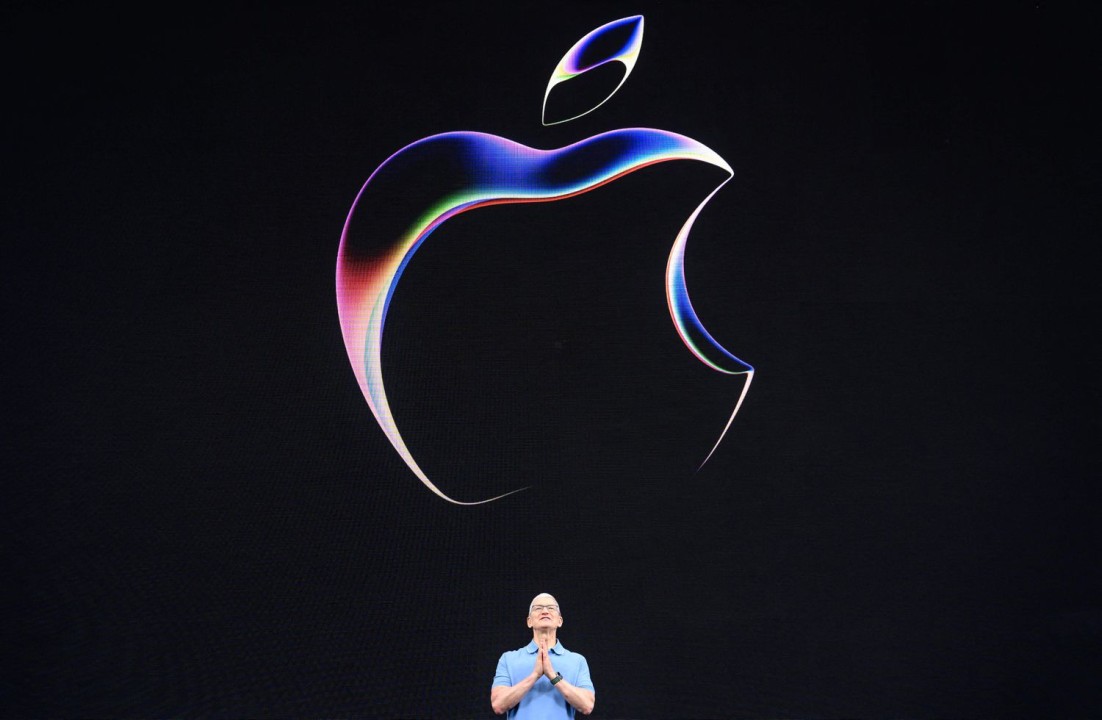Apple's AI Ambitions: Innovation, Imitation, Or Obsolescence?

Table of Contents
Apple's Current AI Landscape: More Than Just Siri
Apple's AI presence extends far beyond its widely known virtual assistant, Siri. While Siri forms a significant part of the equation, Apple's AI ambitions are woven into the fabric of its entire ecosystem.
Siri's Evolution and Limitations
Siri, launched in 2011, has undergone significant evolution. Its strengths lie in its seamless integration with the Apple ecosystem, its voice assistant capabilities, and its ability to handle basic tasks. However, compared to competitors like Alexa and Google Assistant, Siri faces several limitations:
- Limited third-party app integration: Siri's ability to interact with non-Apple services lags behind its competitors.
- Inconsistent accuracy: Siri's understanding of natural language and its ability to correctly interpret commands can be inconsistent.
- Limited proactive features: Siri often reacts to explicit commands rather than proactively offering helpful suggestions or insights.
On-Device AI and Privacy
Apple strongly emphasizes on-device processing for many AI tasks. This strategy prioritizes user privacy by minimizing the amount of data sent to Apple's servers. While this approach offers significant privacy benefits, it also comes with limitations:
- Resource constraints: On-device processing can be resource-intensive, potentially impacting battery life and performance.
- Model size limitations: The complexity of AI models that can run efficiently on devices is restricted by processing power and memory constraints.
However, Apple has implemented several privacy-enhancing features:
- Differential privacy: This technique adds noise to data before it's analyzed, protecting individual user information while still allowing for aggregate insights.
- On-device processing for features like image recognition and dictation: This keeps sensitive data local to the device, enhancing security.
Machine Learning in Apple Products
Machine learning is silently powering numerous features across Apple's product line:
- Photo organization: Apple's Photos app uses machine learning to intelligently organize photos based on faces, objects, and scenes.
- Health tracking (Apple Watch): The Apple Watch employs machine learning for features like fall detection and heart rate monitoring.
- Predictive text: Apple's keyboard uses machine learning to predict words and suggest corrections, improving typing efficiency.
Comparing Apple's AI Strategy to Competitors
To understand Apple's position, it's crucial to compare its approach to key competitors.
Google's AI Dominance
Google is undeniably a leader in AI, boasting significant investments and advancements across various sectors:
- Large language models: Google's advancements in large language models power its search engine, translation services, and other applications.
- AI-powered search: Google's search engine leverages AI for improved search results, understanding of user intent, and personalized experiences.
- Widespread AI integration: Google integrates AI across its various products and services, from Android to Google Cloud Platform.
Microsoft's AI Push
Microsoft is aggressively pursuing AI integration, particularly through its partnership with OpenAI:
- Integration into Windows and Office 365: Microsoft is incorporating AI into its core products to enhance productivity and user experience.
- Strategic investments in generative AI: Microsoft's investments in generative AI models are transforming its productivity tools and cloud services.
Apple's Differentiator: Focus on Privacy and User Experience
Apple distinguishes itself by prioritizing privacy and a seamless user experience:
- Commitment to data privacy: Apple emphasizes its commitment to user privacy, a key differentiator in an increasingly data-driven world.
- User-friendly interfaces: Apple’s focus on intuitive interfaces ensures that its AI features are accessible and easy to use.
- Hardware-software synergy: Apple's tight integration between hardware and software allows for optimized AI performance and power efficiency.
Future Predictions: Innovation or Stagnation?
Apple's future in AI is full of both promise and peril.
Potential for Breakthroughs
Apple has the potential to make significant breakthroughs in several areas:
- Advanced health applications: AI could revolutionize healthcare through improved disease detection, personalized treatment plans, and proactive health monitoring.
- More sophisticated assistive technologies: AI could empower individuals with disabilities through advanced assistive technologies and personalized support.
- Improved personalized experiences: AI can personalize user experiences across Apple's product ecosystem, improving efficiency and relevance.
Risks of Falling Behind
However, several challenges could hinder Apple's progress:
- Difficulty attracting top AI talent: Competition for skilled AI researchers and engineers is fierce, posing a challenge for Apple.
- Limited data access compared to competitors: Apple's focus on privacy limits its access to the vast datasets crucial for training advanced AI models.
- Reliance on existing hardware and software: Apple’s existing infrastructure may present limitations in adapting to rapidly evolving AI technologies.
The Role of Apple Silicon
Apple's custom silicon, like the M-series chips, plays a vital role in improving AI performance and efficiency:
- Optimized performance: Custom silicon is designed to optimize AI workloads, delivering superior performance compared to generic processors.
- Lower power consumption: Apple Silicon is engineered for power efficiency, extending battery life for AI-intensive tasks.
- Enhanced on-device processing capabilities: Apple Silicon enables more sophisticated AI models to run efficiently on Apple devices.
Conclusion: The Future of Apple's AI Journey
Apple's current AI strategy presents a mixed bag. While its focus on privacy and user experience is a significant strength, its relative lack of aggressive investment and data compared to competitors poses a risk. Whether Apple's AI journey will be one of innovation, imitation, or obsolescence remains to be seen. The company's commitment to on-device processing and its powerful custom silicon offer a strong foundation for future growth. However, successfully attracting top AI talent and navigating the challenges of data limitations will be crucial for its continued success.
What are your thoughts on Apple's future in Artificial Intelligence? Will Apple continue to innovate in the field of AI, or will it face obsolescence? Share your predictions and insights on the future of Apple AI!

Featured Posts
-
 State Action Against Nc Daycare Reasons For Suspension And Next Steps
May 09, 2025
State Action Against Nc Daycare Reasons For Suspension And Next Steps
May 09, 2025 -
 Uk Visa Restrictions Report On Potential Nationality Limits
May 09, 2025
Uk Visa Restrictions Report On Potential Nationality Limits
May 09, 2025 -
 Depart De Feu A La Mediatheque Champollion A Dijon Bilan Et Consequences
May 09, 2025
Depart De Feu A La Mediatheque Champollion A Dijon Bilan Et Consequences
May 09, 2025 -
 Wynne And Joanna All At Sea Review And Critical Reception
May 09, 2025
Wynne And Joanna All At Sea Review And Critical Reception
May 09, 2025 -
 Overtaym Drama Vegas Golden Nayts Oderzhivaet Pobedu Nad Minnesotoy V Pley Off
May 09, 2025
Overtaym Drama Vegas Golden Nayts Oderzhivaet Pobedu Nad Minnesotoy V Pley Off
May 09, 2025
